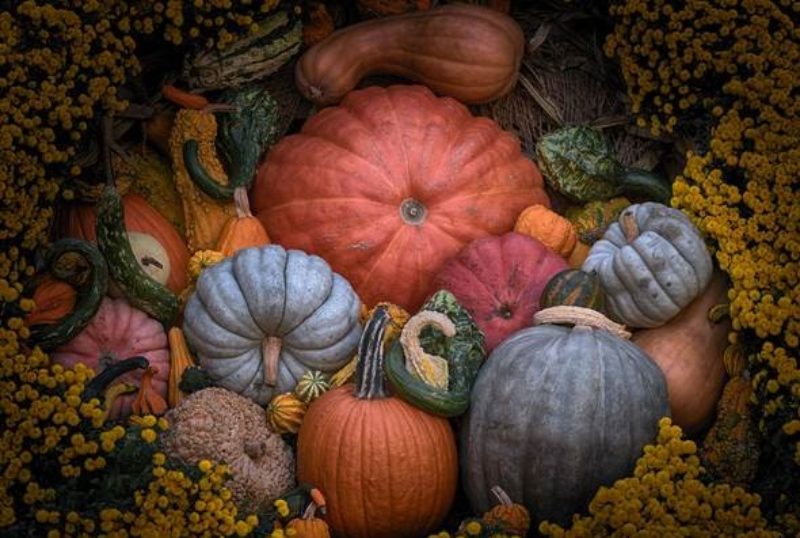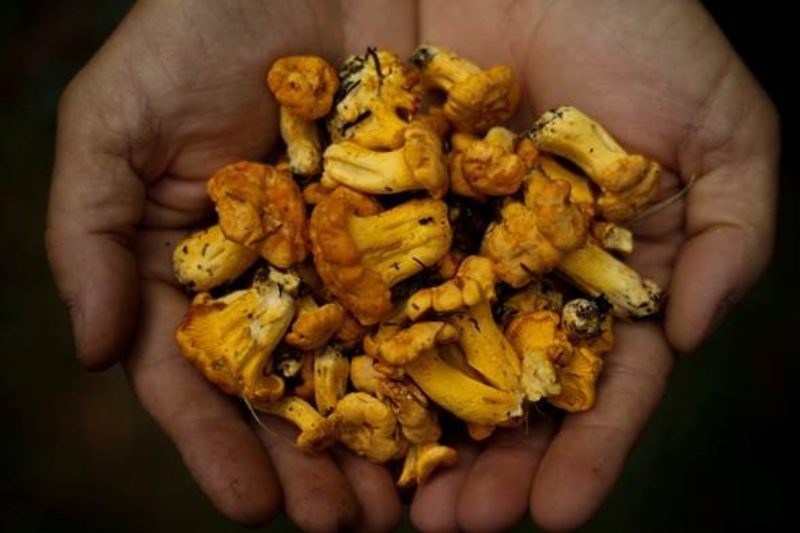November 2020 Celebrating Indigenous Foods this Fall
By Violet Virnich
Fall is a season for celebrating harvest, and it’s also a time to recognize the Indigenous foods found in our country. This month, we’re sharing facts about Indigenous heritage and food cultures, and the chefs celebrating them. Read on to learn about Indigenous foods and how to incorporate them into your meals!
Background of Indigenous Foods
Indigenous foods – or those that are cultivated in their country of origin – have a history of close ties to seasonality and locality. These values are ones that we could continue to strive towards in order to support a more eco-friendly and nutritious food culture. According to the First Nations Development Institute, current and historical influence, policy, and relocation of Indigenous peoples has led to a loss of food culture. Now, there is a major drive to return to the roots and teachings of traditional food gathering and preparation. These practices include foraging, growing your own food, and even hunting. This movement is spearheaded by famous Indigenous chefs like Sioux Chef Sean Sherman. Sherman and others are part of the fledgling revolution to not only reconnect us to Indigenous foods, but to bring it into popular awareness through their restaurants, books and blogs. These chefs also work to promote health of Indigenous North Americans.
Examples of Indigenous Foods and Dishes

Some of our favorite foods originate right here in our own country. According to the American Indian Health and Diet Project, “the Americas have provided the world with at least half of the foods we know today.” Some fall favorites among those on the list include:
- Vegetables like squash, pumpkin, kale and corn
- Heritage grains like amaranth, quinoa and wild rice
- Nuts and seeds like chia seeds, sunflower seeds, pine nuts and acorns
- Natural sweeteners like maple syrup
How to Incorporate These Foods Into Nutritious Meals
Celebrate these Indigenous foods by integrating them into a healthy diet. Here’s some menu inspiration:
- Smoked trout with a side of Sioux Chef Sean Sherman’s original recipe, wild rice pilaf with mushrooms and dried cranberries
- Seared salmon with crushed blackberries
- Blue corn pancakes with pepitas and pumpkin spice (check out our Recipe of the Month)
- Roasted squash salad with quinoa and cranberries
- Chia seed pudding with honey and pine nuts

Examples of Restaurants and Blogs Featuring Indigenous Foods
Sioux Chef Sean Sherman’s restaurant, Indigenous Food Lab, and book The Sioux Chef’s Indigenous Kitchen, emphasize farming, cooking and utilizing preservation methods similar to traditional practices. One of the practices promoted in Sherman’s teachings is the enjoyment of healthy fats, such as the consumption of nuts and seeds – a popular food enjoyed by Indigenous North Americans. Sherman also emphasizes traditional practices such as foraging for mushrooms, cooking techniques like smoking and hand-milling, and much more. On top of this, Sherman takes into account the varied diets and practices used across the wide range of the United States, from the Pacific coast and mid-region plains to the eastern Appalachian Mountains.
A Colorado-based restaurant featuring Indigenous dishes is Tocabe: An American Indian Eatery (locations in Denver and Greenwood Village). Tocabe’s menu popularizes delicious traditional foods like fry bread (a puffed fried dough pocket), dressed up with a variety of Indigenous ingredients such as bison, turkey and cranberries. Another popular dish is wild rice and quinoa bowls, served with salsas, hominy and cheese. With an ordering system similar to that of Chipotle, it’s easy to taste a variety of Indigenous dishes.
Find ways to appreciate these delicious and nutritious foods and spread of awareness of these revered chefs and the cultural cuisine they celebrate. For more recipes and information, visit the New York Times, Sioux-chef.com and powwows.com, Indigenous Food Revolutionary, The Fancy Navajo and Native Food.
Get to know our author:
Virnich is a senior, majoring in Food Science and Human Nutrition. Her areas of interest in nutrition are Holistic Health, Naturopathy, and Maternal/Infant Nutrition. Last summer, Virnich enjoyed studying Nutrition and Food Systems in Denmark and Greece!
More Information
For additional resources to healthy eating, check out these programs from our registered dietitian nutritionists. More health tips are also available at the College of Health and Human Sciences Pinterest board. Lastly, don’t forget to sign up for the KRNC monthly newsletter!


